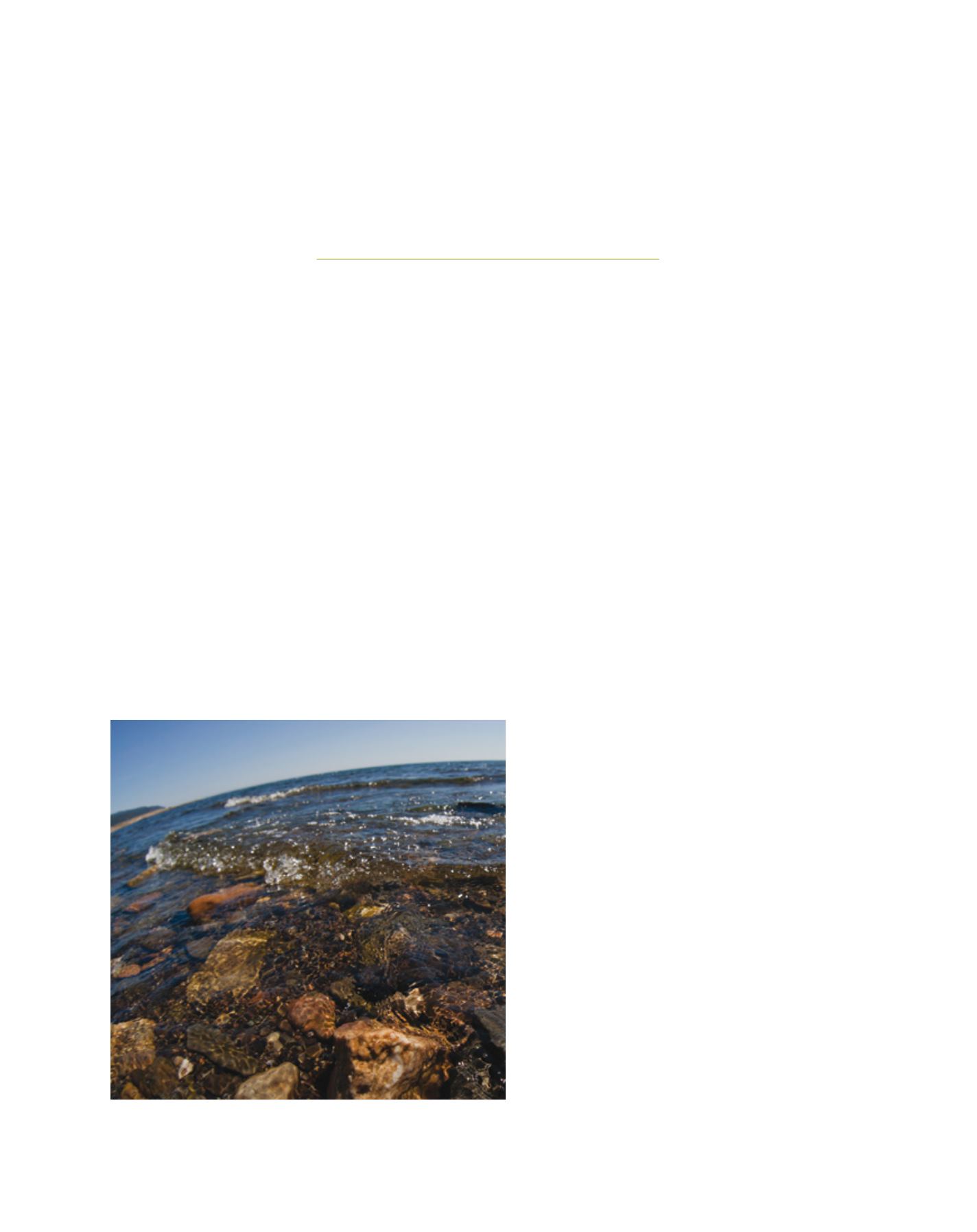

[
] 81
Mankind on the shores of the Baikal:
the transboundary ecosystem of
Russia and Mongolia
E. I. Lishtovannii and A. N. Matveev, Irkutsk State University, Russia; B. Bayartogtokh,
Mongolian State University; and T. Villemin, University of Savoie, France
L
ake Baikal, located in South-Eastern Siberia, is one of
the most unique lakes in the world. It was formed 25-30
million years ago and corresponds to a rift valley that is
almost subsiding today. The lake contains about 20 per cent of
the world’s surface freshwater supply and its transparency is
striking up to 40 metres deep. It is a place of biological water
flora and fauna diversity on a global scale. At present, more than
2,630 species and varieties of plants and animals are known
to science, two thirds of which are endemic.
1
The number of
known Baikal organisms is continuously growing, as revealed
by research done by Russian and other scientists.
Lake Baikal was inscribed on the United Nations Educational,
Scientific and Cultural Organization’s (UNESCO) World Heritage
List in 1996. In 2008, the Russian Government announced that the
lake is one of the seven wonders of Russia.
The largest tributary of Lake Baikal is the Selenga
river, which springs in Mongolia and brings more
than 60 per cent of the water influx to the lake. The
Selenga river basin is a transnational mega-ecosystem,
the largest water basin of Mongolia and the Republic of
Buryatia region of the Russian Federation. The Selenga
basin comprises more than 80 per cent of the Baikal
basin, indicating the significant role of Mongolia in the
long-term ecological health of the lake.
The Selenga, flowing into Lake Baikal, forms the
world’s largest freshwater delta occupying an area of 680
km². This delta was included in the Ramsar Convention
list of Wetlands of International Importance in 1996 –
a decision explained by the river’s abundance of flora
and fauna, as well as its considerable role in the purifi-
cation of polluted Selenga waters coming into the lake.
The drainage basin of the Selenga river is 447,060 km
2
,
with a length of 1,024 km (including the headwaters of
the Ider River which are 1,476 km long). The length of
the river in Russia is 409 km. The river basin is directly
affected by industrial and agricultural sites located in
Mongolia and in the Republic of Buryatia, and indirectly
affected through the air by industrial sites of the Irkutsk
region. Surface pollution, caused by precipitation and
anthropogenic sources, directly influences all elements of
the Selenga ecosystem and gradually percolates through
underground layers. There is a more intense migration
of toxic components through these structures. Linearly
elongated centres of underground toxic water pollution
are formed in the area and might enter the Selenga as well
as the Baikal water system. In such a situation, the delta
plays a significant role in Selenga river self-purification
processes. The delta is a massive wetland area, which
undergoes intensive processes of binding and sedimenta-
tion of river-driven organic matter and pollutants.
In the Selenga delta area, the most apparent changes
in the lake water level result from the natural and
anthropogenic processes connected with the Irkutsk
Hydroelectric Power Station. The dam was constructed
in the late 1950s on the Baikal’s outlet, the Angara
River, 60 km from the place where the Angara flows
out of the lake. Seismic, tectonic and other endogenous
T
ransboundary
W
ater
M
anagement
Lake Baikal contains about 20 per cent of the world’s surface freshwater supply and
2,630 plant and animal varieties
Image: Evgeni Kozyrev


















